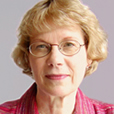
Facilitator’s Notes
on SLP Level 2
Following are excerpts from an interview with SLP Level 2 facilitator Renée Hanson, also a senior consultant in POD and manager of POD’s University Consulting Alliance. Hanson is looking forward to offering SLP Level 2 again in the coming academic year.
How did you get started with the SLP Level 2 Leadership Agility Series?
After attending a related conference workshop in October 2009, I began studying the leadership agility model developed by Bill Joiner and Stephen Josephs. I quickly realized how incredibly useful Joiner and Josephs’ framework could be for UW leaders, both for thinking about leading in this time of ambiguity and rapid change and for developing the needed skills.
POD Director Ujima Donalson and I began discussing leadership agility, and the idea to develop this material into a series dovetailed perfectly with our goal to present a higher-level Strategic Leadership Program.
In a nutshell, what is leadership agility about?
As noted in their book, Leadership Agility: Five Levels of Mastery for Anticipating and Initiating Change, Joiner and Josephs found that only about one in ten managers has mastered the level of agility needed for consistent, effective leadership in turbulent conditions. They discovered four competencies that the exceptional 10% had in common and linked those competencies to adult development levels. Each level represents an increased ability to respond effectively to change, complexity, and interdependence—or, in other words, agility.
Increasing agility is not like climbing the rungs of a ladder, it’s more like video games that are structured into multiple levels of play. You master each level of play by using the abilities you already have to successfully meet the challenges you encounter. By the time you’ve mastered the challenges at a particular level, you’ve also gained a new set of abilities that provide you with the foundation you need for the next level.
What have you discovered are the benefits of the leadership agility material for UW leaders?
This model gives leaders the context and tools to be successful in our increasingly complex environment and to adapt their leadership to support the cultural changes happening at the University.
Growing leadership agility is not just about understanding the framework or the model; the real payoff comes from practicing the competencies in whatever work you’re engaged in on a daily basis. That practice leads you to new ways of seeing, thinking, and acting that can take you, your team, and your organization to the next level. For leaders who truly open themselves up to this material, even day-to-day leadership tasks become opportunities for growth.
I’ve been able to use the leadership agility model in coaching clients who are moving into higher levels in their organization. This framework can take them to their next level—and to the next and the next as their careers proceed—and they can use the framework to help others do the same.
What have you learned about yourself in developing and teaching this series?
I've shifted from seeing through the lens of personality type to one of adult development level. I have a much greater (and growing) understanding that people can’t perform at levels above their development and that it isn’t helpful to expect them to. What is helpful is having a model that helps people reflect on the skills they need to be successful in their current role and the roles to which they aspire.
When I encountered the leadership agility model, I was looking for the next stage for myself as a leader and for new approaches to help my clients face their challenges. It's been exciting to work with a model that has higher levels to which I can support others in achieving and I can also continue to aspire to myself.


